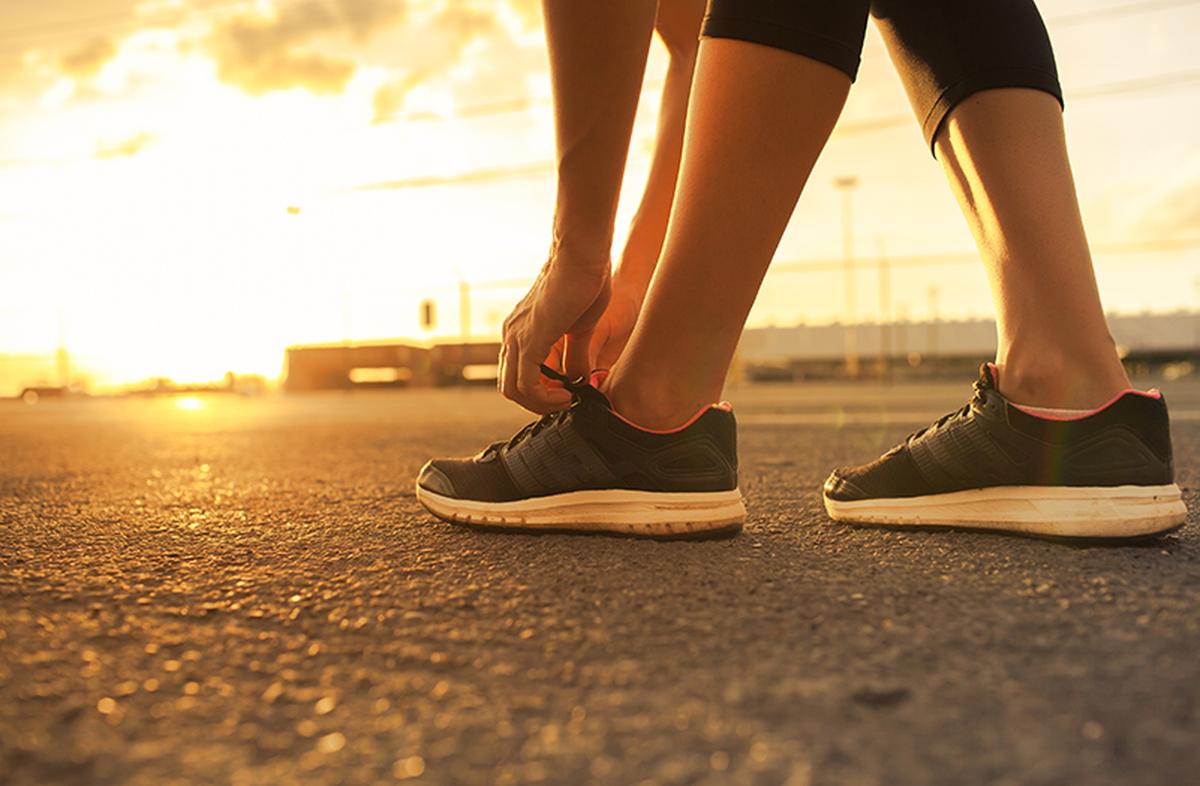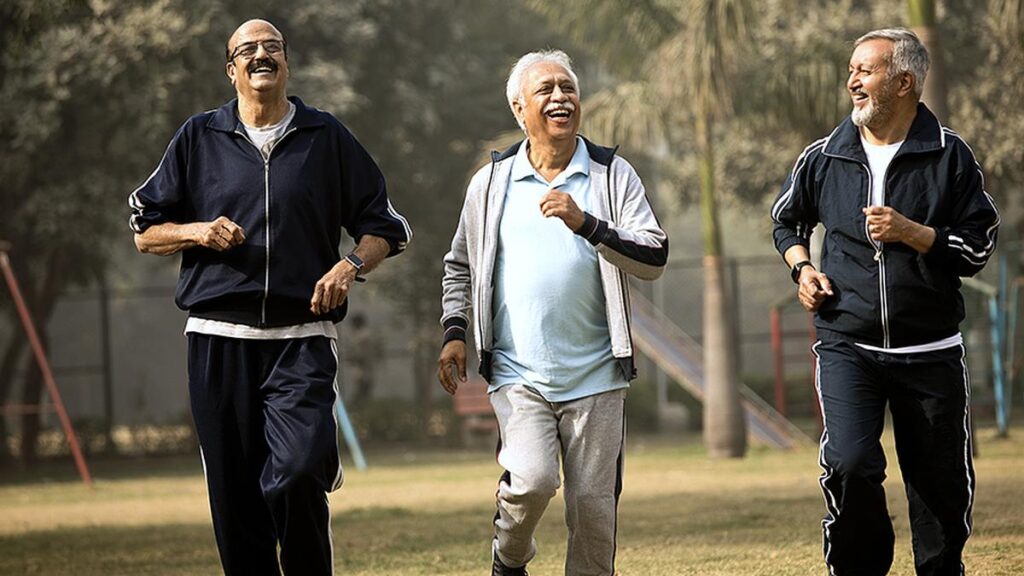To understand why exercise is not something we, in India, have embraced and made part of our everyday lives, we need to look back to our past.
India is a country with a long, rich and deep history. For hundreds of years, we lived simple yet strong lives. Most people’s days involved doing physical labour in the form of chores, tasks or work, eating whatever was cultivated or produced in the surrounding regions, engaging in social interactions, and relying on nature to protect and nourish. For the longest time, even up until a few decades ago, the average Indian’s life ran more or less along these lines. As a result, exercise was simply not something we prioritised. We did not have to.
Our days were filled with enough physical tasks that required us to move our limbs and use our muscles regularly. Our lives were hard enough that they demanded a lot of walking and load-bearing activities. Our food was simple and well-portioned, so we did not need to ‘burn it off’.
While different forms of ‘exercise’ such as wrestling, mudgar swinging, kalaripayattu, yoga and more existed, these were not considered activities that the everyday person must engage in. There were coaches, gymnasiums, schools and students, but the common person, thanks to how difficult life was back then, was active enough (and busy enough) to not require such exercise, daily, for general health.
Similarly, dance and sports were art forms. There were enthusiasts and specialists who trained for excellence and spent hours practising every day for years on end. But, again, these were specialised skills and not everyday activities. Participation was not mandatory or even strongly recommended. The everyday person had other problems to deal with and other activities that took up their time and energy on a daily basis. In other words, life was hard, and hence everyday living kept us occupied with little time left for self-care.

The fundamental aspects of well-being
Now, what does this have to do with well-being? For any person to look, feel and function well, we need three fundamental things – food, activity and rest. Food is how we procure energy and nutrients. Activity is how we keep our bodies stimulated and functioning well. And rest is how we rebuild, recover and recuperate. As evolutionary beings, we need all three of these in optimal amounts to thrive.
Back in the day, we did get all three. But while we had to find ways to procure food and find time to rest, activity was just a natural part of life. We did not have to find opportunities to be active like we do today as everything in life required movement. In the absence of machinery and technology, procuring food, cooking, visiting friends and family, sourcing water, commuting, travelling, cleaning – pretty much every aspect of living required movement. As a result, ‘exercise’, as we know it today, was blended into daily life.
Add to this, food scarcity, minimal variety, the general lack of processed high-calorie foods, inaccessibility to easy entertainment and constant distraction, and we have ourselves a situation where we are moving maximally, eating minimally and resting optimally. In such a scenario, there was simply no need for exercise.

What is happening today?
Fast forward to today, and a lot of us still carry the same feeling about exercise – that there is no reason to exercise unless there is an absolute need. Most people need a doctor to recommend exercise before they take their first steps.
In familial structures, exercise is not considered a priority. Except for a few families, most families do not teach their children about exercise. While parents stress the importance of education and health, exercise somehow slips through the cracks. It does not even garner the importance that eating vegetables does. Parents do not model behaviour by exercising or trying to stay fit, and playing a sport is considered a waste of time after a certain age. Unless a child or person is clinically unwell or extremely overweight, going to the gym or playing a sport is not something that is commonly encouraged.
In educational structures too, exercise is not considered a priority. Other than a couple of PT periods per week (that most children promptly use to do homework or eat snacks), there is quite literally no focus on exercise or movement. You would think, that in schools where students are expected to sit (in suboptimal postures) for six hours or more every day, there would be a few minutes of basic movement every hour. But you would be wrong. Such is the state of movement in our schools, colleges and universities today. This is not unconnected to the general mindset of ‘education is more important than movement’ that arises from the familial structures that precede educational structures in a child’s life. To add to this, schools and teachers do not do much to change this mindset even though children spend most of their time in educational institutions.
In political structures too, exercise is not considered a priority. Parks, walking trails, gyms, sporting arenas and other outdoor recreational spaces that promote exercise are not easy to find in places other than metropolitan cities. Even when installed, they are not showcased and maintained well leaving them inaccessible to the everyday person. Governments tend to care more about healthcare and less about fitness. And that means governments are more intent on curing ailments and not preventing them. While cure might be the need of the hour, what we need to remember is that chronic metabolic diseases, which are a direct result of lifestyle factors such as movement and nutrition, contribute to more ailments than infectious diseases by a huge margin.

Without sufficient movement, our joint mobility, blood circulation, posture, body weight, heart health and energy levels are all affected. Photograph used for representational purposes only
| Photo Credit:
Getty Images
What needs to be done
Looking into the future, this needs to change. Exercise needs to become a part of every Indian’s daily life. And here is why:
Our bodies are designed to move: Today, an average adult living in a city walks just about 2,000 to 3,000 steps per day. This works out to just about 30 minutes of walking every 24 hours. While most of what we need to do in a day (chores, tasks, work, etc.) can be achieved with this, our bodies are designed to move and need more activity. Without sufficient movement, our joint mobility, blood circulation, posture, body weight, heart health and energy levels are all affected. Increasing the number of steps we walk is one of the simplest ways to improve health. And since we do not have a real reason to walk anymore, it becomes all the more important to create time to walk every day.
Multi-joint, multi-planar movement is necessary: While walking helps, our bodies are made up of multiple joints and muscles that are meant to move in different planes. While earlier, we had opportunities to use all of these joints and muscles and move in different planes and at different speeds, today, a structured exercise programme is the only way for us to ensure we give the body the optimal movement it needs.
Energy and weight management: With an abundance of food around us and the convenience with which we can procure it, energy management has become vital. Consistently consuming more energy and expending less have resulted in creating an energy surplus in our bodies. This surplus has, in turn, resulted in consistent weight gain leading to obesity which could lead to other metabolic conditions such as insulin sensitivity, cardiovascular diseases, high blood pressure, breathing difficulties and musculoskeletal disorders. One way to address this energy surplus is by expending more energy. And the only way this can be achieved is by doing physical activities.
Metabolic health: This is our body’s ability to process food to fuel and use it efficiently to work, repair cells and store excess energy, and is a critical part of well-being. And regular exercise is the simplest and most effective way to improve one’s metabolic health. Exercise significantly improves metabolic health by improving insulin sensitivity, regulating blood sugar levels, improving lipid profiles (lowering LDL, raising HDL), reducing body fat, and positively impacting the function of organs such as the liver and pancreas, all of which help in lowering the risk of chronic diseases such as type 2 diabetes and non-alcoholic fatty liver disease.
Basal metabolic rate: While regular walking and endurance exercises can help in increasing our energy expenditure in the short-term, in the long-term, the smartest way to consistently increase energy expenditure is by increasing our basal metabolic rate (BMR). A person’s basal metabolic rate is the amount of energy burnt throughout the day excluding the energy they burn through exercise and activities of daily life. The most effective way to increase one’s BMR is by building more muscle. Compared to fat, muscle is more expensive for the body to maintain. So, having more muscle demands that the body burn more energy to simply maintain one’s current body weight and composition. And the simplest way to build more muscle is to strength train consistently. While strength training sounds scary to many, in reality, strength training is a simple process of stimulating our existing muscles and thereby gradually building more muscle. It is safe to say that, irrespective of who you are, adding strength training to your life will only result in positive outcomes.
Longevity: A buzzword today, longevity is something almost all of us are after. It is no surprise that we want to live long lives. And for that, we are after different diets, pills, supplements, treatments and procedures. But it has been proven without a doubt that all these efforts matter less than consistent exercise. Exercise is the single strongest predictor of longevity and all-cause mortality. In other words, if you want to live a long life, the simplest and most effective way to do so is to start exercising and making it a consistent part of your life.
Quality of life: While exercise helps with weight loss, muscle building, metabolic health, energy management and longevity, the most important reason to embrace exercise is to improve our quality of life. Because it does not matter how long we live if the quality of our life is not optimal. While lifespan is about how long one lives, healthspan is about how long one lives healthily. We all want to live for as long as possible but without suffering and without being a burden to those around us. And exercise is an incredible tool that can enable us to do just that.
To put it all together, we do not exercise enough not because we are not capable of it or because the benefits of exercise have not been proven. It is simply because we are not used to it. What we need is a mindset shift that helps us build new habits as a population. And why should we go to this trouble? Because exercise is a tool that can help us become better versions of ourselves. It is a guaranteed way to look, feel and function better. And it is most certainly the magic pill that can add years to our lives, and life to our years.
(Raj Ganpath is a certified fitness and nutrition coach with over 15 years of experience, co-founder of Quad Fitness and author of the bestselling book Simple, Not Easy.)
Published – May 23, 2025 05:10 pm IST

